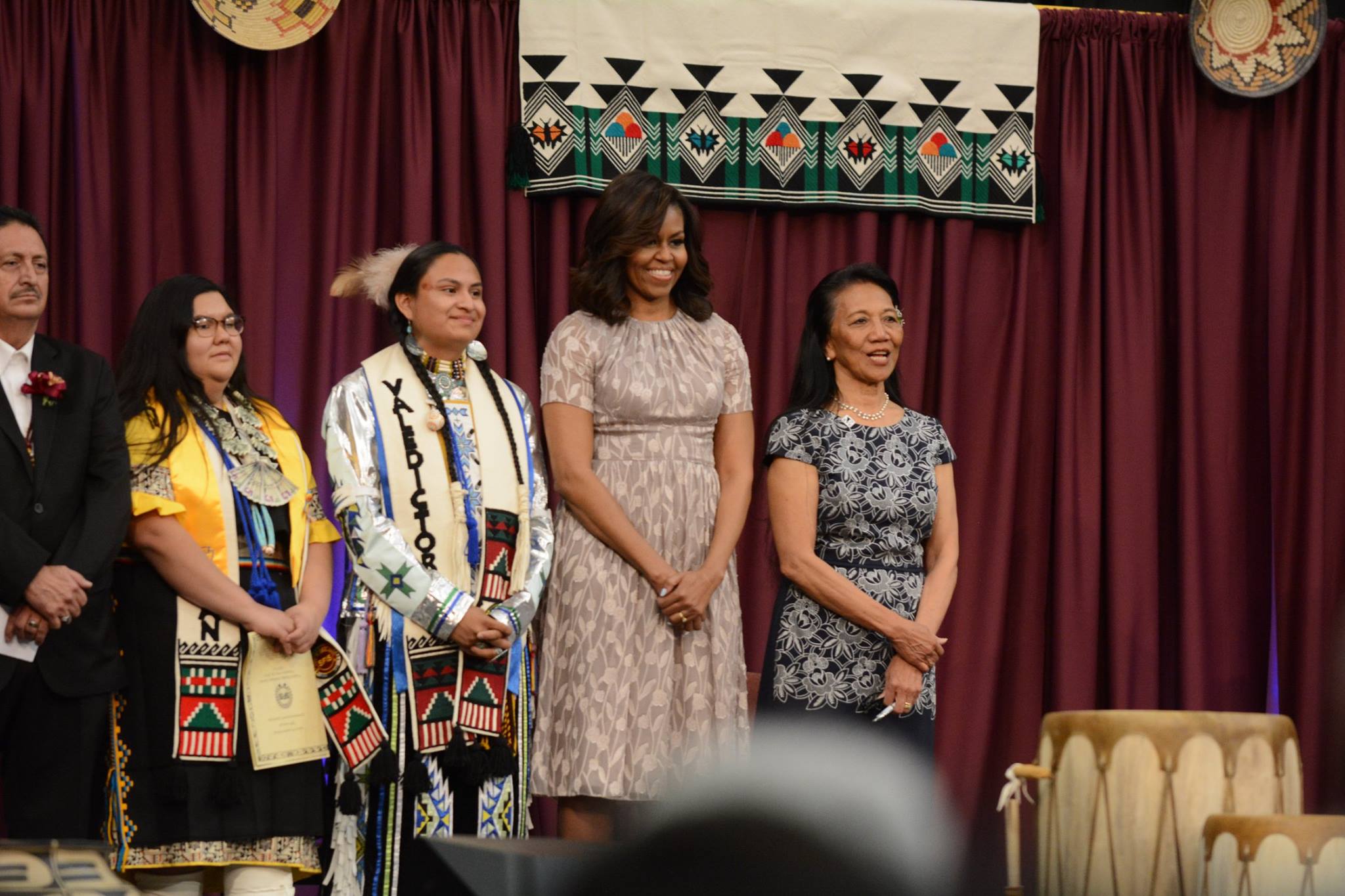
Emanuel Vigil, third from left, stands next to First Lady Michelle Obama during the graduation ceremony at Santa Fe Indian School in New Mexico on May 26, 2016. Photo from SFIS / Facebook
Emanuel Vigil, a member of the Jicarilla Apache Nation, just graduated from Santa Fe Indian School in in a ceremony featuring First Lady Michelle Obama. He shares his experience at the school and what life is like for a young Native American:
Ms. Obama's visit to our school brought the experience of being a Native American teen today back into the public consciousness. Many people probably didn't even know about the existence of the Santa Fe Indian School until the first lady's visit. Despite the fact that our ancestors were obviously this country's original inhabitants, and that we are still over 4 million strong, in some ways Native Americans are an invisible minority in this country. First of all, there's the issue of nomenclature. Modern Native American teens I know prefer to be called "indigenous." There is also a growing movement called "native youth" with a #nativeyouth hashtag on Twitter, which speaks to the indigenous teen experience. When Columbus first colonized the Americas, he thought he landed in India, so he called the inhabitants "Indians." We are trying to distance ourselves from the term "Indians" as Columbus is often associated with the genocide of native peoples, the taking of resources, and the detriment of our existence as a people. Some young people stay on their reservations to attend Bureau of Indian Affairs schools, and others — like me — travel to boarding schools such as the Santa Fe Indian School to get what is often a better education. Schools on the reservations are usually underfunded and it is difficult to find good teachers that work for low wages. They are often located in rural reservations such as the Jicarilla Apache Nation and the Navajo Nation.
Indianz.Com SoundCloud: First Lady Michelle Obama at Santa Fe Indian School May 26, 2016
Boarding schools however, are more centrally located, in places like Santa Fe, or the Los Angeles suburbs. They have staff members that advocate for funding and the progression of the students' education. Many students go on to high-profile universities. From my school alone, graduating seniors are going to schools like Dartmouth College and Stanford University, in addition to Columbia. It only costs $50 to attend the Santa Fe Indian School for the entire year. This fee includes books, field trips, dorm room boarding, dining, transportation during the major holiday breaks, and uniforms for sports. What I most valued from attending a boarding school is interacting with the smartest and brightest indigenous kids from across the country. Boarding schools bring together teens from many of the hundreds of tribes that still exist across America. I have friends from the Navajo Nation, the nineteen Pueblos, and the Mohawk tribe.Get the Story:
Emanuel Vigil: what it's really like to be a native american teen today (i-D / Vice 7/7)
Join the Conversation
Related Stories
First
Lady Michelle Obama shares message of hope with Indian school (05/26) Remarks by First Lady Michelle Obama at Santa Fe Indian School (05/26)
Santa Fe Indian School preparing for First Lady Michelle Obama (05/23)
